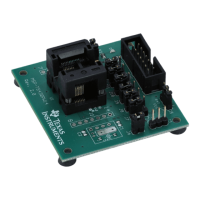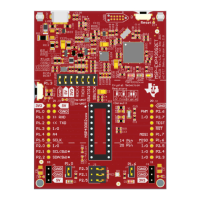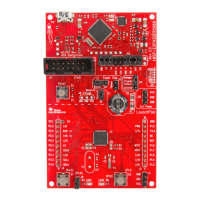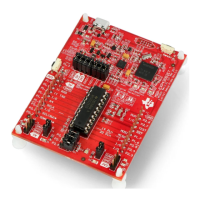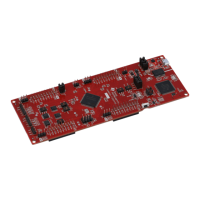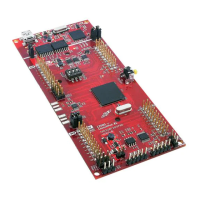www.ti.com
MSP-FET
167
SLAU278Y–May 2009–Revised March 2016
Submit Documentation Feedback
Copyright © 2009–2016, Texas Instruments Incorporated
Hardware
B.42.2.4 MSPDS MSP Target BSL Activation Commands
The MSP-FET can be used for communication with the target device BSL through the I
2
C and UART
protocols. The activation of the different protocols is equivalent to the MSP-FET backchannel UART. See
Table B-45 for command details. In MSP-FET BSL communication mode, flow control is not available,
because this is not supported by the MSP target device BSL.
UART BSL: The MSP-FET BSL UART mode supports the following baud rates: 9600, 14400, 19200,
28800, 38400, 56000, 57600, and 115200. For the BSL UART, 8 + 1 + even parity is used.
I
2
C BSL: The MSP-FET is always the I
2
C master, and the target device BSL is always the I
2
C slave. 7-bit
I
2
C addressing mode is used with a fixed I
2
C slave address of 0x48.
NOTE: If the MSP-FET is configured to support BSL communication, debugger functionality is
disabled. To switch to debugger mode, either perform a power cycle (unplug the USB cable)
or configure the baud rate to 8001.
Table B-45. MSP Target BSL Activation Commands
Baud Rate Command
9620 Set all UART or I
2
C pins to high impedance – no current flow into target device
9601 BSL entry sequence and power up 3.3 V (UART BSL)
100000 or 100001 BSL entry sequence and power up 3.3 V (I
2
C BSL)
400000 or 400001 BSL entry sequence and power up 3.3 V (I
2
C BSL)
9623 Power up 3.3 V
8001 Activate debugger

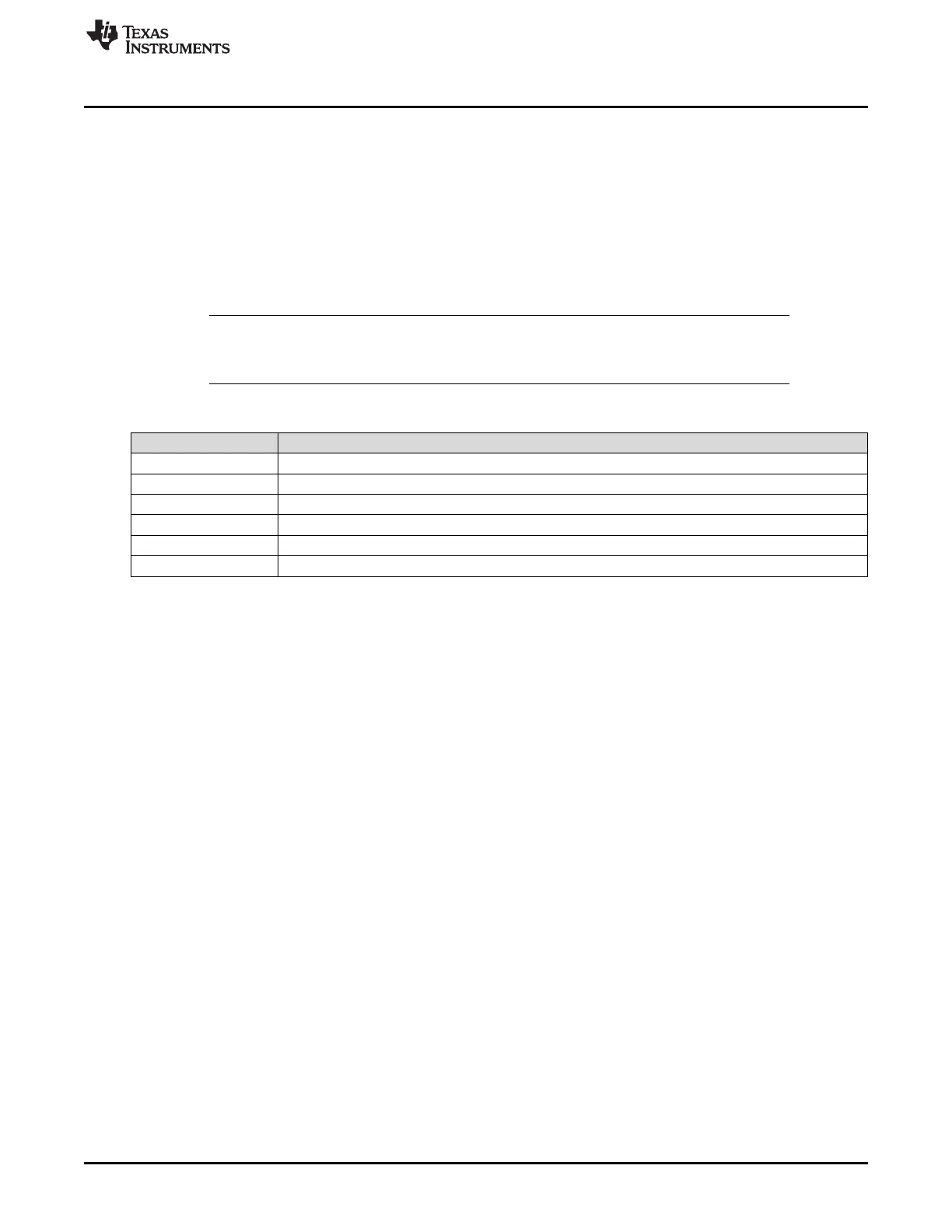